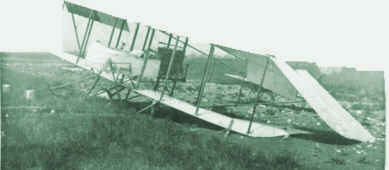 |
AIRCRAFTOF THEA E F |
MAURICE FARMAN 1914

Development and Operation
Following the entry of the U.S. into the war it was realized that there was an insufficiency of aviation training facilities, both in the U.S. as well as in France. This condition coincided with the need for additional need for aircraft designed by European manufacturers. This dual need was partially addressed by having both the A.E.F. Air Service and the U.S. Navy have pilots trained in Italy. In exchange, Italy was going to provide aircraft for the American personnel to fly. The result was that the Italians provided training facilities for A.E.F. pilots. These pilots, following training, served both with Italian units or were transferred to the Western Front in France. The U.S. Navy operated at traing facility at Lake Bolsena and operated a naval air station on the Adriatic. A later Italian version was the so-called Farman Colombo, or MFC, with a Colombo D.110 110 hp engine, that featured an oval nacelle. Replaced by more modern types in the reconnaissance role in mid 1917, the Farman remained in service with defense flights until the end of the war, because its good flying characteristics made it fit for night flying. It was also flown by two squadrons in Lybia, 104a and 106a, and in that african country it remained operational until 1922. A large quantity of Farmans were turned over to the flying schools, including Foggia airport, where it was much used for the training of American pilots. Many trainer Farmans were overhauled and replaced the inline engines with Anzani 50 hp radials. A batch of Farmans was specifically built as trainers by the OFM factory in Naples as late as 1918. |
Aircraft and Flight Characteristics
|
Length: |
9,50 m |
|
Height: |
3,20 m |
|
Empty Weight |
640 kg |
|
Loaded Weight |
890 kg |
|
Maximum Speed |
106 kph |
|
Wing Span |
16.20 m |
|
Ceiling |
3,800 m |
|
Climb |
|
|
To 1,000m |
10 min 13 sec |
|
To 2,000 m |
25 min |
|
Endurance |
3 h 30 min |
References:
- Official data Italian Air Force manuscript 1923 -
- Photo courtesy of Roberto Gentilli.
To find other Doughboy Features visit our |
Membership Information  Click on Icon |
For further information on the events of 1914-1918
visit the homepage of |
Michael E. Hanlon (medwardh@hotmail.com) regarding content,
or toMike Iavarone (mikei01@execpc.com) regarding form and function.
Original artwork & copy; © 1998-2000, The Great War Society